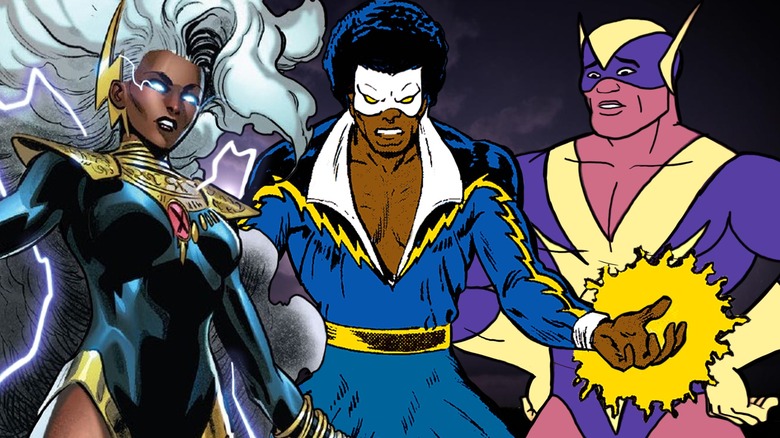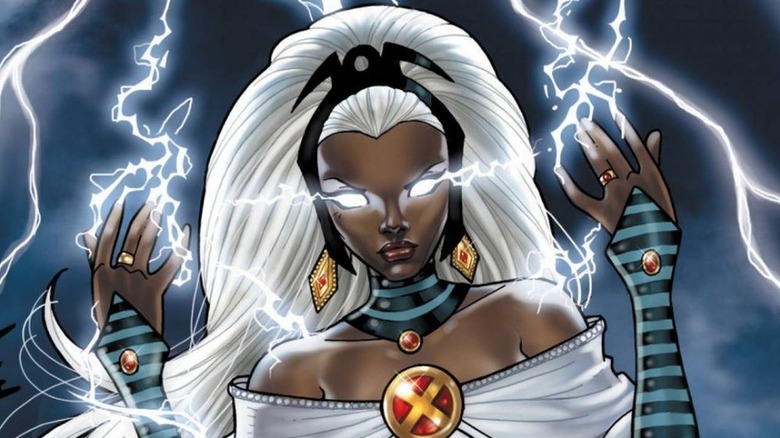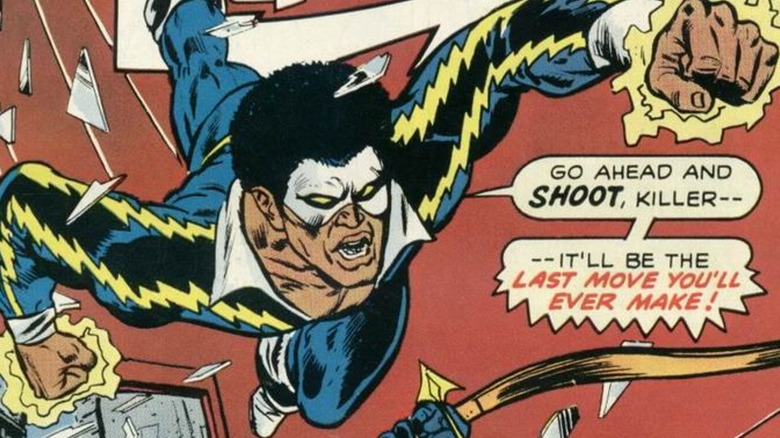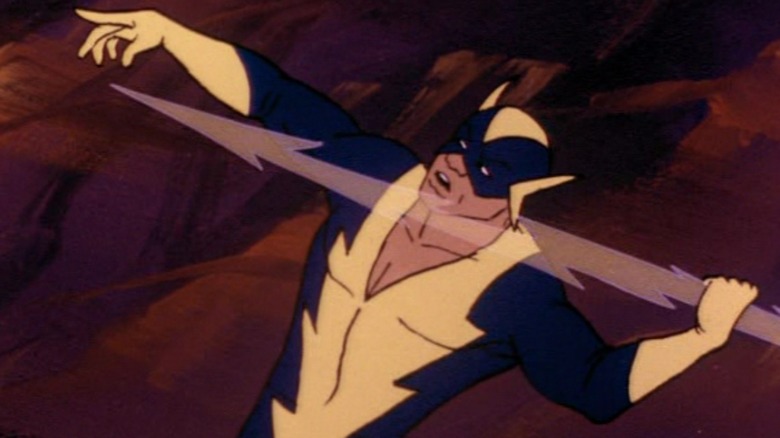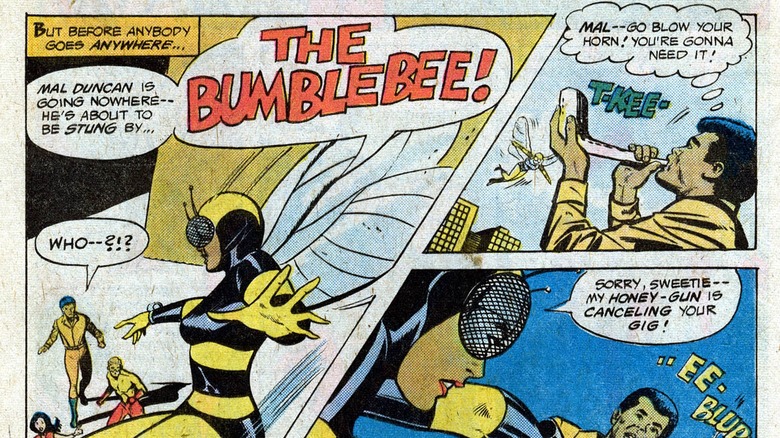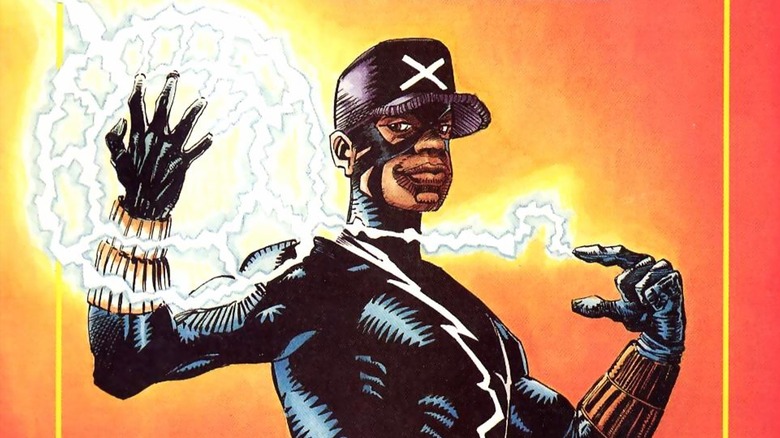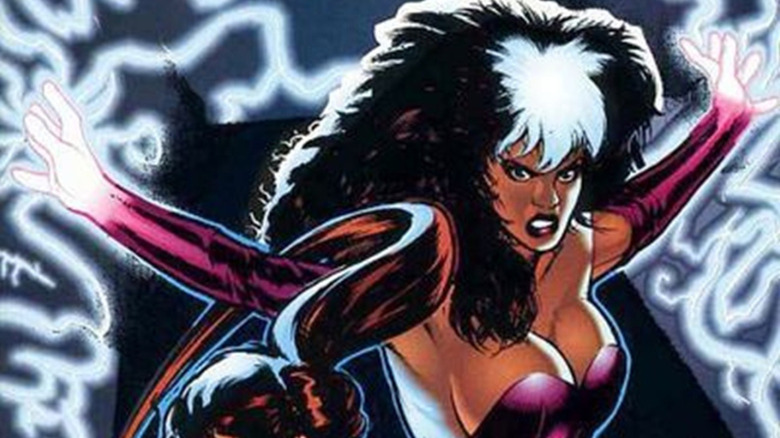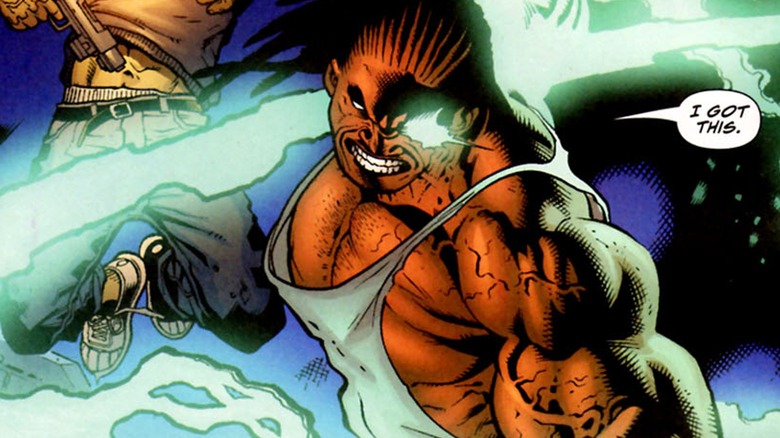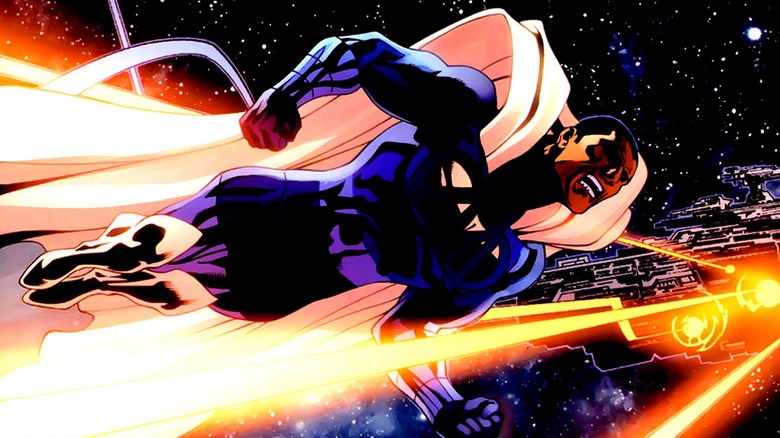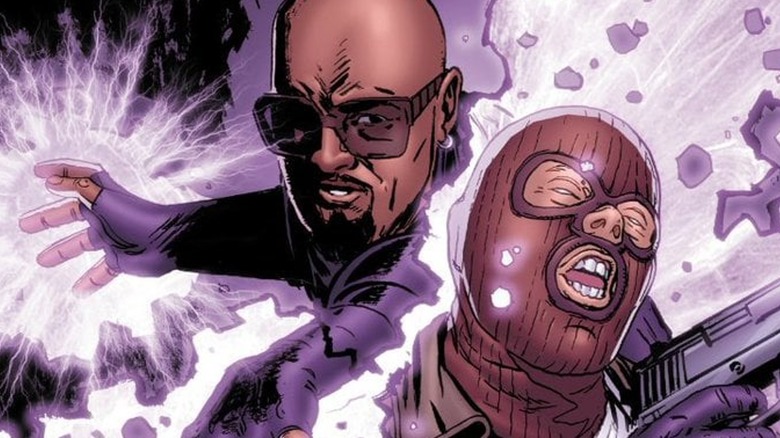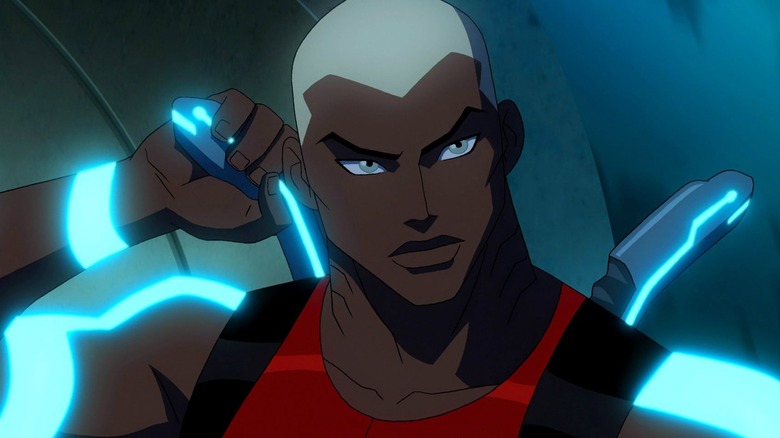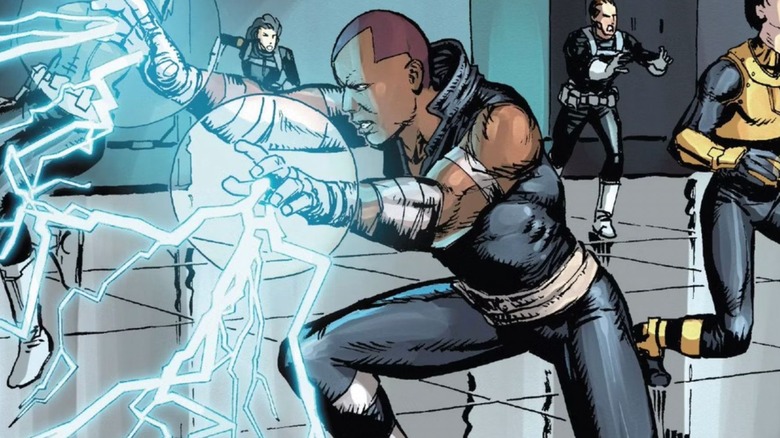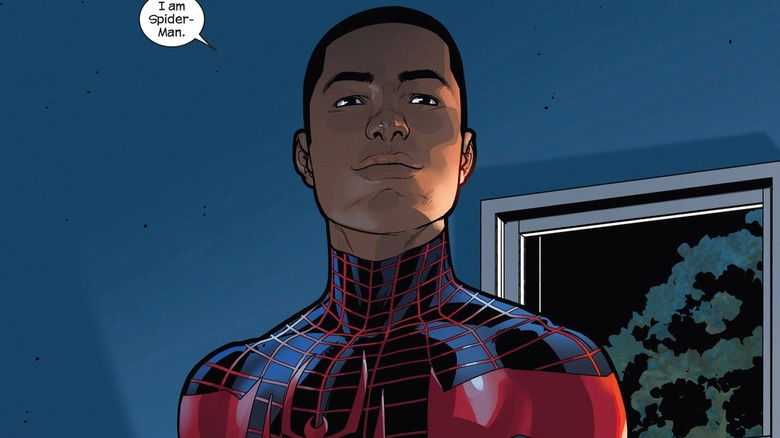Every Black Superhero With Electric Powers: A Weird Racial Trope Explained
We may receive a commission on purchases made from links.
When comic books first started to make their mark in popular culture, almost all superheroes were white men. This was due to a number of factors, not the least of which is that comics were very much products of their time. The concept of a Black superhero was unthought of for a long time because of racial issues in the United States, as well as the belief that they simply wouldn't sell.
It took time for Black superheroes to make their mark on the industry, and when they finally did, many came equipped with electric powers. Though this wasn't done for any specific reason, after some of the new heroes began to pick up speed and popularity, many of the subsequent Black superheroes fell into a common electrical trope, and it continued like that for decades.
If you look through a stack of comics today, many of the Black superheroes you find are still going to have some kind of electrical powers. While there is a plethora of Black superheroes like the Falcon and Black Panther who have no electrical powers whatsoever, the trope remains a common stereotype.
Who was the first Black superhero with electricity powers?
The first Black superhero with electricity powers was Ororo Munroe, the mutant known as Storm. Her first appearance came in Marvel Comics' "Giant-Size X-Men" #1, published in 1975, which introduced Storm as one of the new X-Men. Storm's powers are based on her mutant gene, and she's considered an Omega-level mutant.
Omega-level mutants are ridiculously OP, and Storm is no exception. While she can tap into the Earth's magnetic field to produce lightning and use it as a weapon, that's only one of her many powers — after all, Storm is so named because she can completely alter and control the weather. This means she can create or dispel tornadoes, generate rain or stop it, and call lightning down upon a wide area or use it to strike her enemies.
While it's true that she was the first Black superhero with electric powers, Storm's introduction isn't why subsequent Black characters also had electricity-based abilities. That distinction falls upon a DC Comics character that was created to try and tap into another demographic, and in doing so, an entire trope was born.
How the Electric Black Superhero trope took off - and what it means
DC Comics created Black Lightning to tap into a new demographic, though it wasn't the publisher's first attempt. Initially, DC introduced the Brown Bomber — a white racist who became a Black superhero when he was stressed — in hopes of appealing to Black readers. But the character was one of the most racist depictions ever put inside a comic book. To counter the Brown Bomber, writer Tony Isabella and illustrator Trevor Von Eeden created Black Lightning in 1977, a strong character with electricity-based abilities.
Black Lightning quickly became incredibly popular, so DC continued putting him in its books. While he wasn't the first Black superhero, he was an intriguing character who was well-written, and an entirely new demographic could relate to him. It's empowering for children to see themselves in their heroes, and Black Lightning offered that to an entire generation of kids.
It's possible Storm's popularity helped, but for the most part, it was Black Lightning who established the "all Black superheroes have electricity-based powers" trope in comics. Not only did Black Lightning inspire the creation of new characters with similar powers, but he also spawned a lot of copycats. One such copycat made it onto television over three decades before Black Lightning joined the cast of "Young Justice" due to several companies' inability to agree on licensing.
Black Vulcan
Black Lightning was both powerful and incredibly popular, so plans were made to introduce him on "The All-New Super Friends Hour." Unfortunately, DC Comics, Tony Isabella, and Hanna-Barbera were unable to come to an arrangement they could all agree on, and it never happened. But while Black Lightning couldn't be a part of the show, there was no reason another similar character couldn't join the team.
Black Lightning's costume and identity were altered, resulting in Black Vulcan, but to anyone paying attention, it was Black Lightning wearing new threads. Dave Gibbons, the artist responsible for "Watchmen," designed the hero who, though popular, didn't appear in many places outside "Super Friends."
Black Vulcan has only been featured in four comics since his creation. The same cannot be said of Black Lightning, who's appeared in hundreds of comics, starred in his own live-action TV series, and appeared in numerous shows and movies. Black Vulcan was more of a solution to a licensing problem than anything else, but he was also the beginning of the trope as the first of many characters to copy Black Lightning's powers.
Bumblebee
Bumblebee debuted at DC Comics before Black Lightning, but she wasn't initially a superhero. She initially appeared in "Teen Titans" as Karen Beecher in late 1976, but in the following year, she debuted as Bumblebee in "Teen Titans" #48. That places her just after Black Lightning and slightly before Black Vulcan's first appearance on "The All-New Super Friends Hour" in September 1977.
While Bumblebee is another Black superhero with electricity-based powers, she's actually more than that. Bumblebee is one of DC's first Black female superheroes, and she has more powers than just her electricity-based ability to unleash electrical bioelectric stings at her enemies. She can fly via a solar-powered suit, and she can shrink to the size of a ... well, a bumblebee. Additionally, Bumblebee is incredibly intelligent.
If any of this sounds familiar, you may know of Marvel Comics' Janet Van Dyne, aka The Wasp. She premiered before Bumblebee, and it's impossible not to notice the similarities they share. Regardless, Bumblebee is popular independent of any inspiration derived from Marvel's Wasp. She's appeared in hundreds of comics and has popped up in animation via "Teen Titans" as well as "Young Justice" and several other TV series and animated films.
Icon
Milestone Comics, which was distributed by DC, created the character Icon as one of the publisher's headliners in the early 1990s. He first appeared in 1993's "Icon" #1 and, like Milestone's other characters, existed outside of the normal DC Universe. "Icon" ran for a few years but ended in 1997 after 42 issues. Since then, the character has found his way into the DC Universe thanks to a merging of publishers in the 2000s, and he's since then appeared in numerous comics and the "Young Justice" cartoon.
Icon's real name is Arnus, aka Augustus Freeman, and he's not human — he's an alien who took the form of a Black man to better fit in on Earth. Icon works alongside Rocket, a human teen who uses Icon's tech to fight villains as a superhero team. Icon came pre-packaged with a plethora of powers, including incredible strength, flight, invulnerability, longevity, shapeshifting, and so much more.
Of course, he also has the ability to control electricity, but it's only one of the many superpowers Icon has employed against his enemies over the years. Unfortunately, he never truly took off like Black Lightning and other electrically powered Black superheroes. He's only appeared in a little more than 100 comics since his introduction, which is a shame, as he's an interesting character with a canon history that stretches back to the mid-1800s, but he's barely made a dent in DC's lore.
Static
Static's first appearance came via a preview at the tail end of "Icon" #1, so he technically debuted in the same issue. "Static" #1 followed a month later, giving Virgil Hawkins and his supporting cast a proper introduction. Static has the ability to control electromagnetism, which comes with a whole host of abilities. Static can fly, create force fields, and heal quickly. He also has magnetic abilities, technopathy (the ability to control technology with his mind), and, of course, electricity control.
Static's abilities make him a close approximation of Black Lightning, but he's got a few more tricks than his predecessor. Like Icon, Static made the leap from the Milestone Comics Universe into DC when the two companies merged, and he's been a popular DC character ever since. Primarily, Static is seen hanging out with the Teen Titans or Young Justice, but he's been involved with the Justice League as well.
Static has proven far more popular than his immediate predecessor, as he's appeared in over 180 issues since his introduction. Outside of comics, Static has shined in animation, having appeared in several programs, including "Young Justice," several feature-length films, and his own series, "Static Shock," which ran for four seasons. Plans were also once in motion to make a Static TV show; unfortunately, it's one of the many DC TV projects that was canceled before it was made.
Rapture
Rapture, a former prostitute named Sharona Jackson, first appeared in 1994's "Savage Dragon" #4 and remained an important figure through much of the long-running series. Jackson grew up on the streets, where she became an escort to pay the bills, taking on the name Rapture. Before long, she lands with a group of women controlled by a pimp, Bryan Walker, who beats another woman to death.
Rapture leaves and is abducted by Dr. Nirvana, who transforms her into a superpowered being, but is nearly killed in the resulting lab explosion. The experiment gives Rapture incredible powers, including the ability to control electricity. This comes in handy when she joins the superhero team known as Freak Force and fights against supervillains. She eventually starts a romantic relationship with Dragon, which eventually results in the birth of Malcolm. Rapture dies in the comics, but not before Larsen introduces several alternate versions of the character.
By this point in comics publishing, it wasn't a new idea to include a Black superhero with electrical powers, but series creator Erik Larsen created something unique with Rapture. As Malcolm's mother, she's incredibly important to the ongoing story, but more than that, she's an interesting character with a tragic backstory that adds to the overall narrative of the series.
Coldcast
Coldcast entered comic books in 2001 via the pages of "Action Comics #775." His real name is Nathan Craig Jones, and he started out as an antihero and member of the Elite. Eventually, that team became Justice League Elite, a black-ops version of the classic DC team primarily comprised of former Elite team members. In his first appearance, Coldcast goes toe-to-toe with none other than Superman.
The Elite run afoul of the Man of Steel because of their penchant for killing their enemies, which leads to a confrontation between the team and Superman. In their fight, Coldcast grabs Supes by the head and blasts him with a massive pulse of electric energy — a blast so strong, it defeats him ... temporarily, of course. Coldcast went on to appear in several animated projects, and in every depiction, he's a true antihero.
Unfortunately, while Coldcast has been given some time to shine in the cartoons, he hasn't appeared in many comics. He's only been featured in 31 as of late 2024, and there's no big push from fans to see much more of him. Coldcast is also a good example of a Black antihero with electricity-based superpowers, giving him more of an edge than those who stick to the same side of the law as the Last Son of Krypton.
Blue Marvel
Adam Brashear, aka Blue Marvel, is an interesting character for reasons other than his power set. While he was first introduced in 2008's "Adam: Legend of the Blue Marvel" #1, his backstory places him, canonically, as a hero who's been operating in the Marvel Universe since the 1960s. Timeline-wise, this makes him the first Black superhero with electrical powers, but in reality, he's a more recent creation.
His race is integral to his story; in '62, he received a Presidential Medal of Freedom from President Kennedy, who asked him to retire the same day. This was because Blue Marvel's mask was torn in a fight, revealing him to be Black at a time when America wasn't ready for a Black superhero. Eventually, Blue Marvel decided he'd sat out for long enough, so he pulled his spandex back on and re-entered the world of superheroism.
Benching him for nearly 60 years was a good way of showing how society's intolerance impacted the character's backstory, especially since Blue Marvel isn't a low-level hero. In fact, he's easily one of the most powerful Marvel superheroes ever. In addition to his electric abilities, his long list of superpowers includes antimatter manipulation, invulnerability, light generation, flight, and energy manipulation, as well as the standard set of superhuman stats in strength, agility, stamina, speed, and all the rest. He's also a genius and a trained electrical engineer.
Volt
At BOOM! Studios, many writers and artists have had some fun creating all kinds of characters, including Mark Waid and Peter Krause's Volt from 2009's "Irredeemable." Volt is introduced in the first issue, and he's an interesting character. He worked as a hero for hire, but before long, Plutonian recruits him to the superteam Paradigm in exchange for helping the new hero learn to control his powers.
Initially, Volt had trouble touching anything electronic, as he'd short it out. Unfortunately, the main storyline of "Irredeemable" centers around the idea of what would happen if someone as powerful as Superman wanted to be evil. In this reality, Plutonian snaps and goes on a killing spree, targeting all of his former teammates, allies, and friends — including Volt. This comes back to bite Volt in the end when he tells Plutonian, "You know, I'd give my left arm to help you" — so Plutonian rips off Volt's left arm.
The best part about Volt is that he knows he's a trope. Several times throughout the series' run, he comments on how he's a cliché by being a Black superhero with electrical powers, which was Waid's way of acknowledging Black Lightning, Static, and the other characters who came before him.
Aqualad
You might think from the name that Aqualad is Aquaman's son, but that couldn't be further from the truth. The first Aqualad, Garth, didn't have any electrical powers and wasn't Black, but Jackson Hyde is both Black and has electricity-based abilities. The character is a little unique as he was introduced in the comics in 2010's "Brightest Day" #4 and in the same year made his first appearance in "Young Justice," but with a somewhat different backstory, though his powers are pretty much the same in both mediums.
Aqualad is the son of Black Manta, Aquaman's biggest enemy, but he's fully embraced the Atlanteans and becomes Aquaman's sidekick. In terms of his superpowers, Aqualad has several powers, thanks to his Atlantean physiology, which gives him the ability to breathe underwater, superhuman speed, enhanced senses, and superhuman strength.
Aqualad is also able to discharge strong bioelectric blasts of energy at his foes. While he's not known solely for his electricity-based attacks, it's a big part of his arsenal of superpowers. He uses it often, typically in conjunction with his hydrokinesis, which allows him to control water with his mind. Aqualad hasn't been around for very long, but he's already appeared in more than 225 comics, and odds are that won't slow down anytime soon.
Azari
Back in 2006's "Black Panther" #18, Storm of the X-Men and T'Challa, otherwise known as Black Panther, got married. Eventually, they annul their marriage, but they remain close, which is good because they share a son together. Technically, his name is Azari T'challa T'chacka Evan Duke of Wakanda, but he goes by Azari.
As is common for superhero offspring in Marvel Comics, Azari inherited great power from his parents. Not only did Azari manifest the same abilities as his father, which are enhanced by Wakandan technology, but he also has his mother's ability to fly, manipulate energy, control electricity, and more. All told, Azari has a huge number of superpowers, and he's stronger than either of his folks. He's also from the future, and, thanks to some time travel shenanigans, his parents met him before they had a chance to, well, make him.
Azari has been featured in a number of animated series since his introduction, where the young hero has shown off his impressive abilities. In "Next Avengers: Heroes of Tomorrow," when he creates a shield of electric energy, it takes the form of a massive panther. Because he's the son of Storm and has her powers to boot, Azari is part of the long history of Black superheroes with electric powers, and he's hardly the last to contribute to the trope.
Miles Morales
Superheroes are created in a variety of ways. Miles Morales, for example, was inspired by an episode of "Community" where Donald Glover wears Spider-Man pajamas. He made his debut in the pages of 2011's "Ultimate Fallout" #4 and has been a major player in the comics ever since. Initially, Miles started out in Earth-1610, the Ultimate Universe, but eventually made the switch to Marvel's main continuity of Earth-616.
Miles has the same abilities as other Spider-People, including a precognitive Spider-Sense, the ability to cling to any surface, super-strength, and super-agility. But unlike almost every other version of the web-slinger, Miles has some powers that are unique to him. One of these is that he's able to camouflage himself, making him invisible, but more relevant to his article is Miles' ability to manipulate his bioelectric energy to produce massive blasts of electricity that he calls his "venom attack."
Of all the Black superheroes with electrical abilities who've been introduced since Storm debuted in 1975, Miles Morales is the most popular. Despite being a relatively newcomer, he's already appeared in over 1,260 comic book issues as of late 2024. On top of that, he's headlined Sony's animated "Spider-Verse" franchise, the first two films of which brought in over $1 billion combined. If that's not a resounding affirmation of a character's popularity, what is?
